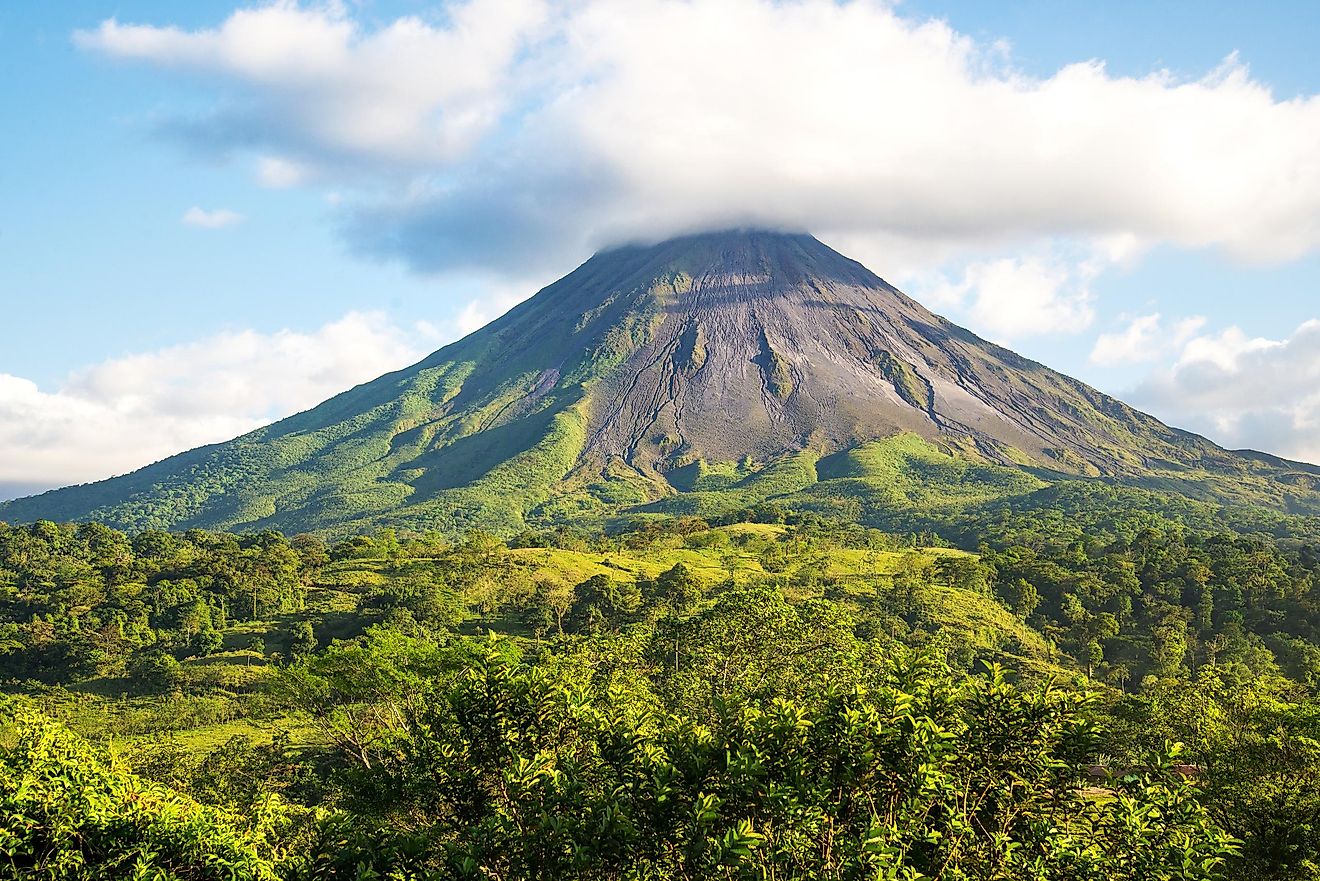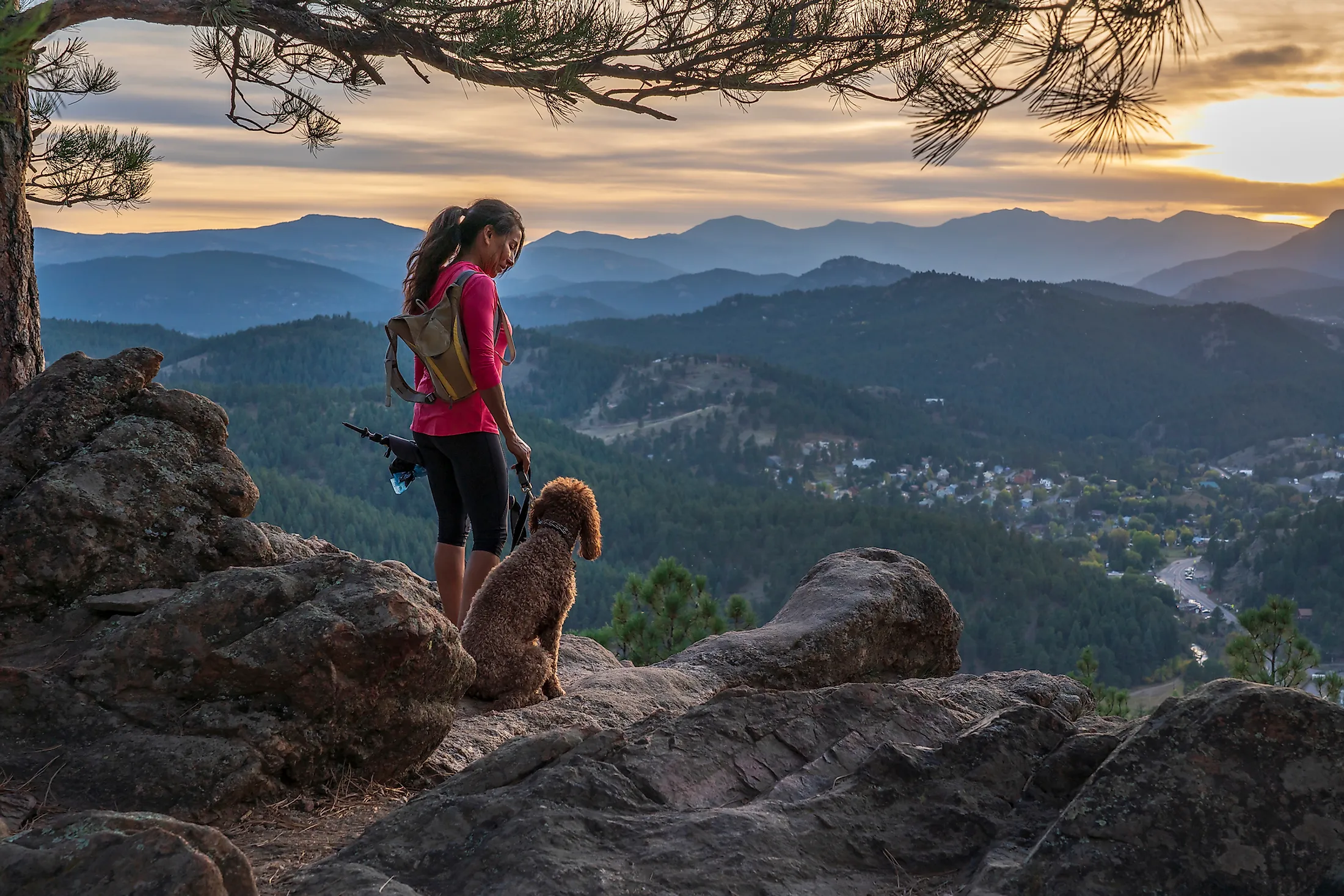
Rocky Mountains
Also referred to as the “Rockies”, the Rocky Mountains are a significant mountain range that dominates the western part of the North American continent. The Rocky Mountains extend for a distance of about 4,800km and are considered North America’s largest mountain system. The Rocky Mountains are bordered by the Great Plains on the east; and by the Canadian Coast Mountains, the Interior Plateau, the Columbia Plateau, and the Basin and Range Province of the United States on the west.
Geography
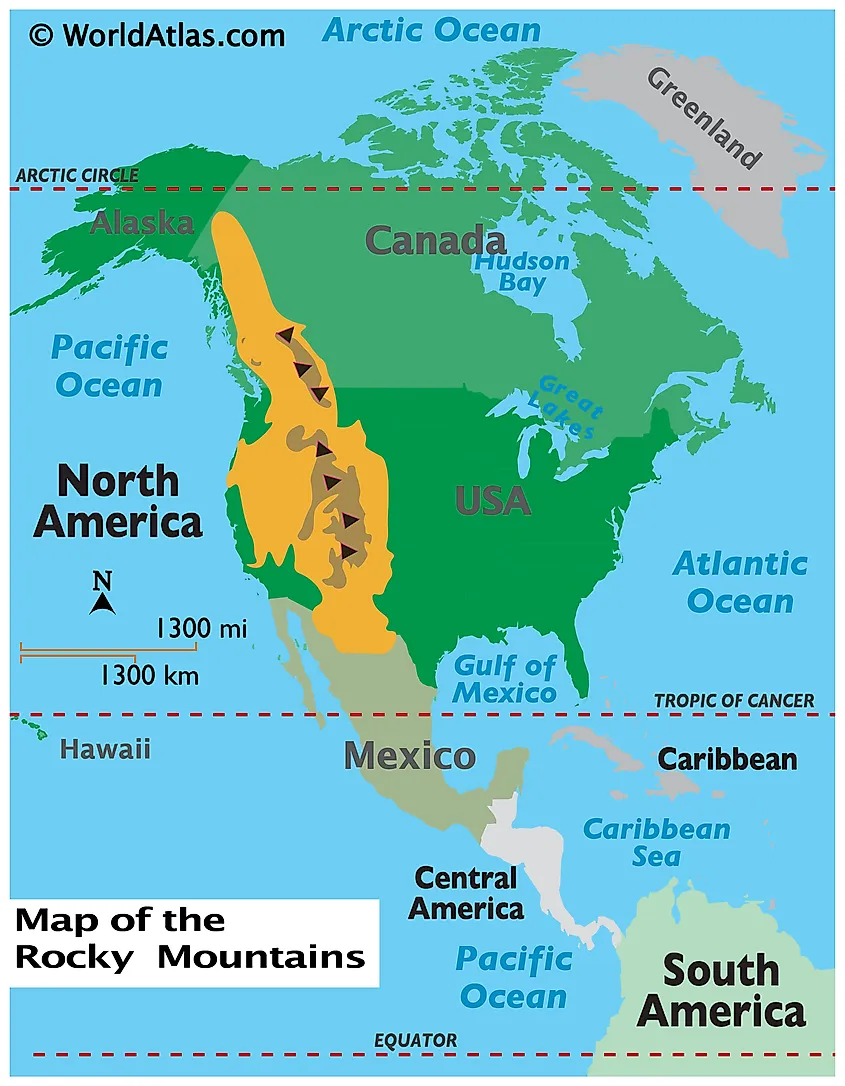
The Rocky Mountains stretch from the northernmost portion of Western Canada to the State of New Mexico in the southwestern United States. The mountain range passes through the US States of Colorado, Idaho, Montana, Utah, Wyoming, and New Mexico, and the Canadian Provinces of Alberta and British Columbia. The Rocky Mountains contain more than 100 individual mountain ranges which are further organized into four broad groups. These groups include:
The Canadian Rockies
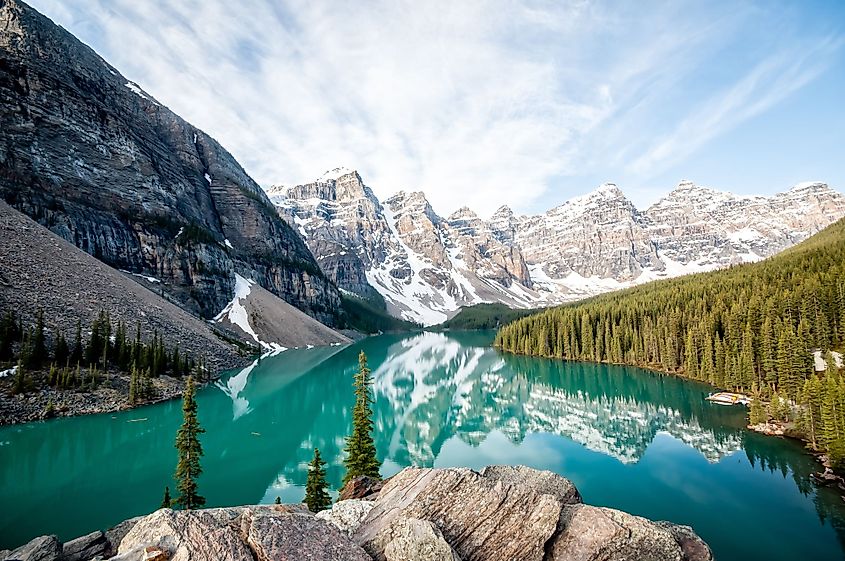
The Canadian Rockies extends southeastwards for about 1,600km from the northern part of the Canadian Province of British Columbia and forms a major part of the natural boundary between the Canadian Provinces of Alberta and British Columbia. Located within the Mount Robson Provincial Park in the Canadian Province of British Columbia is Mount Robson, which rises to an elevation of 3,954m and is the highest point in the Canadian Rockies. The Canadian Rockies are further divided into three major groups: the Continental Ranges and the Muskwa and the Hart Ranges that are collectively known as the Northern Rockies. The Northern Rockies also include the Lewis and Bitterroot ranges in the western part of the US State of Montana and the northeastern part of the US State of Idaho. The Rocky Mountain Trench forms the western boundary of the Canadian Rockies and separates the Columbia Mountains from the front ranges of the Canadian Rockies.
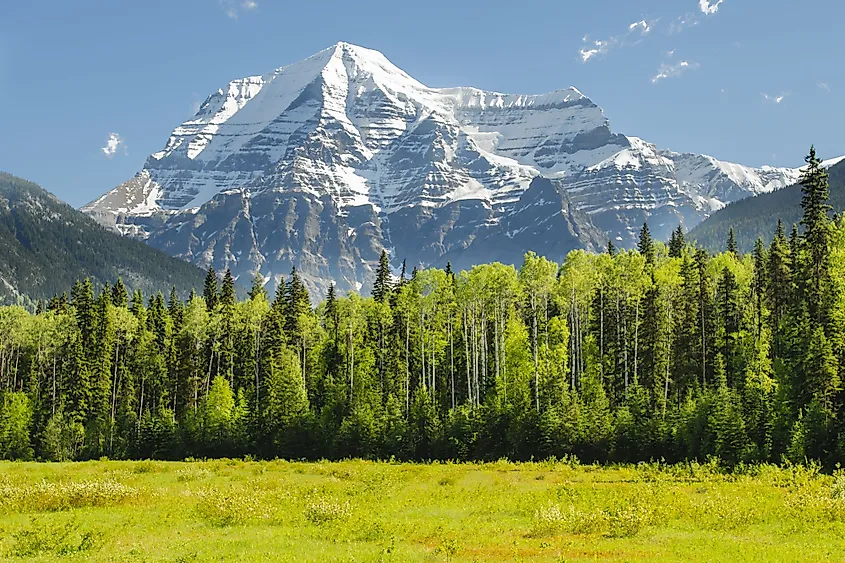
The Middle Rockies
The Middle Rockies feature the La Sal Mountain Ranges, situated along the border of Utah and Colorado; the Uinta Mountain range, straddling Utah and Wyoming; and the Teton Mountain Range, which lies between Wyoming and Idaho. The Absaroka Range stretches from northwestern Wyoming into Montana, serving as a connection between the Middle and Northern Rockies. The central ranges of the Rockies are noted for their towering peaks capped with glaciers.
The Southern Rockies
The Southern Rockies are found in the US States of Wyoming, New Mexico, Colorado, and Utah. The mountain ranges that form a part of the Southern Rockies include the Front Range and the Wet and the Sangre de Cristo Mountains along the eastern slopes and the San Juan Mountains, the Sawatch ranges, the Park and Gore ranges on the western slopes. These eastern and western ranges are separated by many high basins including the San Luis Valley, the Arkansas River Valley, and the North Park.
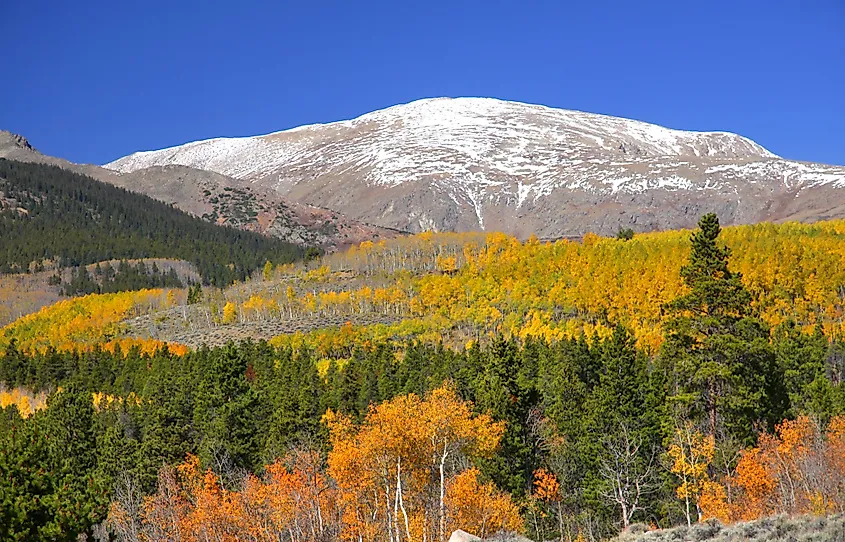
The mountain ranges of the Southern Rockies are comparatively much higher than the Northern and Middle Rockies. Located in the Sawatch Mountain range in the US State of Colorado is Mount Elbert, which rises to an elevation of 4,401.2m and is the highest point in Colorado as well as the entire Rocky Mountains.
The Colorado Plateau
The Colorado Plateau Province is a physiographic region of Intermontane Plateaus that is mainly centered on the Four Corners Region in the southwestern part of the United States. It includes parts of the US States of Arizona, Colorado, New Mexico, and Utah.
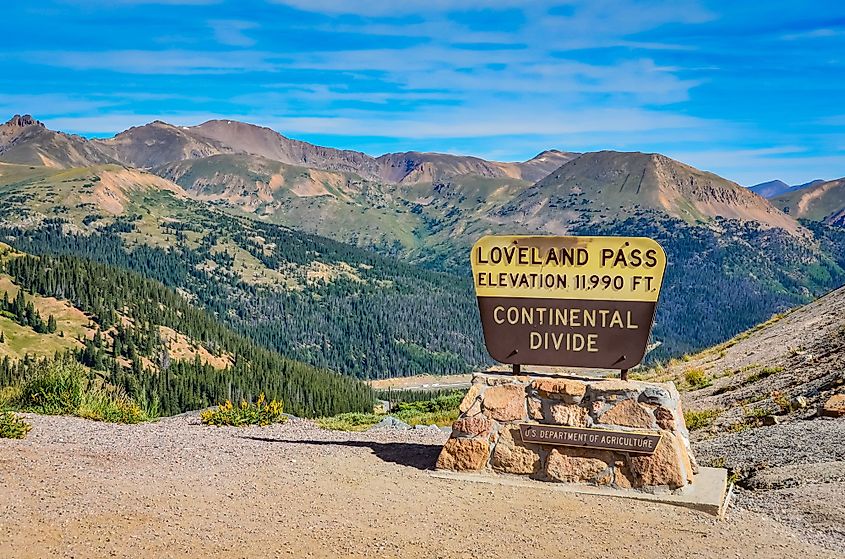
The Rocky Mountains vary in width from less than 100km in the Canadian Rockies to about 600km in the Middle Rockies. Of the100 highest mountain peaks ocated in the Rocky Mountains, 78 high peaks are located in Colorado,10 in Wyoming, 6 in New Mexico, 3 in Montana, and 1 in Utah. The Western Continental Divide runs through the crests of the Rocky Mountains in northwestern Canada and the continental United States. The Continental Divide serves as a hydrological divide separating the waters that flow into the Pacific Ocean from the waters that drain into the Arctic or Atlantic Oceans. Located in the Lewis Range of the Rocky Mountains in the Glacier National Park is the Triple Divide Peak, where water falling on the mountain drains into the Atlantic and the Pacific Oceans as well as the Hudson Bay.
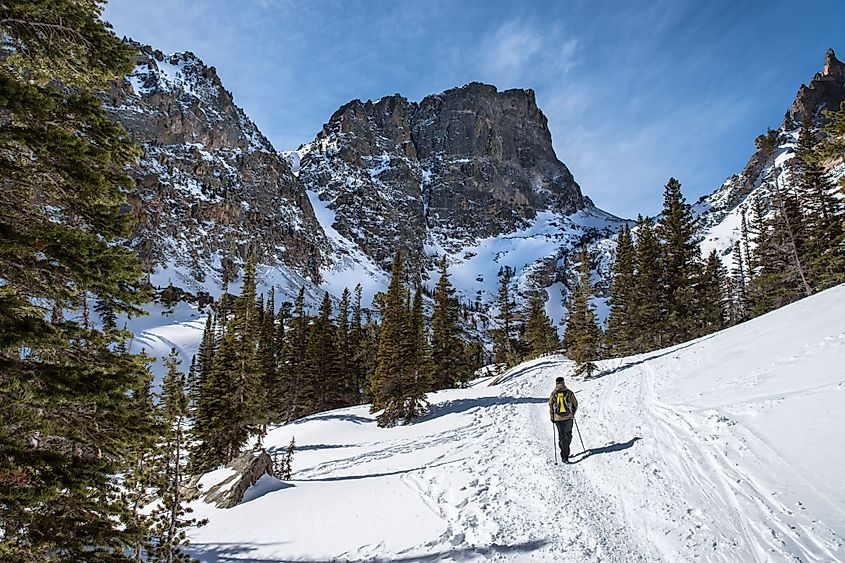
The Rocky Mountains are safeguarded by numerous national parks, such as Banff, Jasper, Kootenay, Waterton Lakes, Yoho, Glacier National Park, Yellowstone, Grand Teton National Park, Rocky Mountain National Park, and Sawtooth National Recreation Area. This region is a major tourist destination, drawing visitors globally. The mountains provide a variety of recreational activities, including hiking, mountaineering, camping, mountain biking, snowboarding, skiing, and fishing.
Geology
The Rocky Mountains represent the easternmost section of the North American Cordillera, having formed during the Laramide Orogeny approximately 80 to 55 million years ago. Throughout this period of mountain formation, the ancient Farallon oceanic plate subducted beneath the North American Plate at a shallow angle. This unique subduction process, combined with vigorous tectonic activity, led to the stacking of crustal sheets, resulting in the emergence of the Rocky Mountains in the western part of North America. Subsequent tectonic movements, erosion, and glaciation during the Pleistocene and Holocene Epochs shaped the mountainous terrain, creating the distinct rugged features of the Rockies. The ice ages further contributed to the development of significant glacial landforms, such as cirques and U-shaped valleys.
The 15 Highest Peaks Of The Rocky Mountains
| Rank | Name | Height, Meters (Feet) | Province or State |
|---|---|---|---|
|
1 |
Mount Elbert |
4401 (14440) |
Colorado |
|
2 |
Mount Massive |
4398 (14428) |
Colorado |
|
3 |
Mount Harvard |
4395 (14421) |
Colorado |
|
4 |
Blanca Peak |
4374 (14351) |
Colorado |
|
5 |
La Plata Peak |
4372 (14343) |
Colorado |
|
6 |
Uncompahgre Peak |
4365 (14321) |
Colorado |
|
7 |
Crestone Peak |
4359 (14300) |
Colorado |
|
8 |
Mount Lincoln |
4356 (14293) |
Colorado |
|
9 |
Castle Peak |
4352 (14278) |
Colorado |
|
10 |
Grays Peak |
4352 (14278) |
Colorado |
|
11 |
Mount Antero |
4351 (14276) |
Colorado |
|
12 |
Mount Evans |
4350 (14271) |
Colorado |
|
13 |
Longs Peak |
4346 (14259) |
Colorado |
|
14 |
Mount Wilson |
4344 (14252) |
Colorado |
|
15 |
Mount Princeton |
4329 (14204) |
Colorado |
Climate
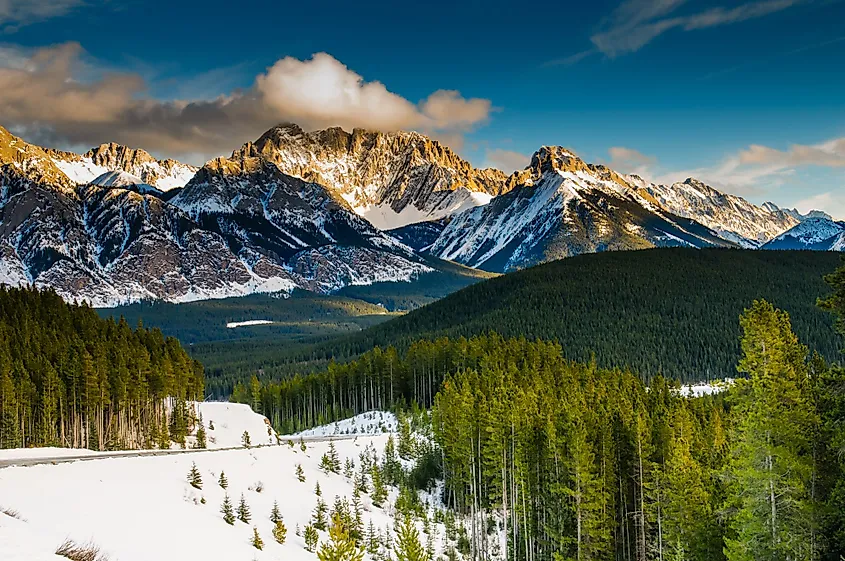
Two vertical zones exist throughout much of the mountain range. The lower zone is characterized by a ‘cool temperate’ climate with relatively cold winters and cool summers. The higher zone is characterized by a tundra-like climate with severe winters and short and cold summers. The precipitation increases from south to north, where the northern parts receive about thrice the amount of precipitation than that of the south. The major amount of precipitation in the south is received as snowfall during winters while local, afternoon thunderstorms are common during the summers.
Ecology
The plant communities of the Rocky Mountains vary greatly according to elevations. The lower elevations are characterized by cottonwoods and other broadleaved deciduous species. The middle elevations are characterized by various trees like aspen, Douglas fir, pinon pine, etc. The subalpine forests are characterized by Engelmann spruce, western red cedar, western hemlock, white spruce, and lodgepole pine. An array of wildflowers like bunchberry, Indian paintbrush, columbine, larkspur, etc. are also found on the mountainous terrain. The tree-line elevation of the Rocky Mountains varies from 3,700m in New Mexico to about 760m at the northern extremity of the Rocky Mountains. Alpine tundra that is characterized by low flowering plants is found in the regions above the tree-line.
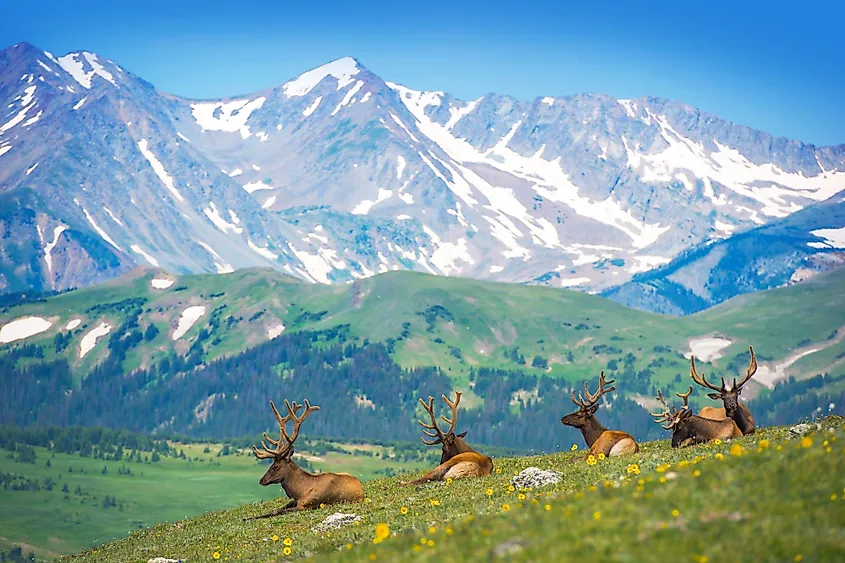
Some of the notable faunal species that are found in the Rocky Mountains include white-tailed deer, mountain goats, bighorn sheep, elk, moose, grizzly bears, black bears, lynxes, cougars, prairie dogs, squirrels, pika, marmots, beavers, etc. Some of the avian species that have been recorded in the Rocky Mountains include bald eagle, great horned owl, Canadian geese, turkey vulture, peregrine falcon, etc.
Brief History
Archaeological evidence indicates that humans began settling in the Rockies between 10,000 and 8,000 BCE. Various indigenous tribes, including the Apache, Shoshone, Cheyenne, Crow Nation, Nez Percé, Blackfoot, Shuswap, Sekani, and Kutenai, inhabited the Rocky Mountain region. These tribes left a lasting impact on the Rockies through their unique cultures and artworks. The Paleo-Indians hunted ancient bison and mammoths in the valleys and foothills of the Rockies. In 1793, Sir Alexander Mackenzie became the first European explorer to traverse the Rockies. Later, a series of explorations by Anglo-Americans, driven by the discovery of fur and valuable minerals, sparked the economic exploitation of the region. In 1872, the US Congress established Yellowstone National Park, the world’s first national park. This was followed by the creation of several national parks and forest reserves aimed at protecting the Rocky Mountains' landscapes.
